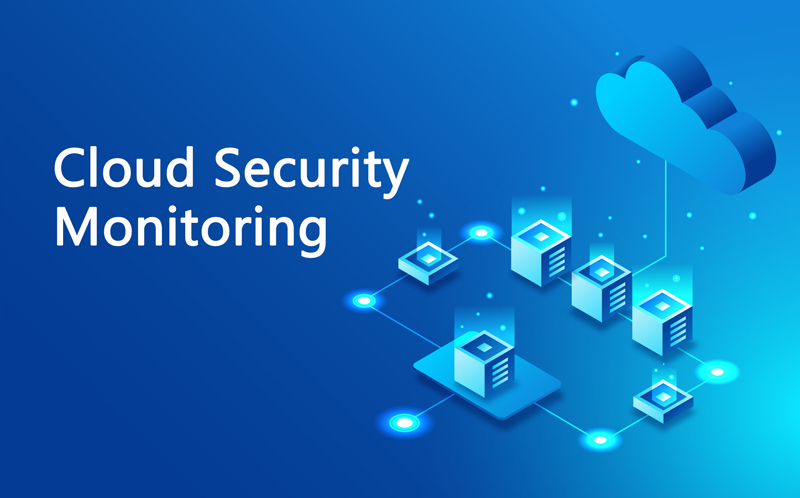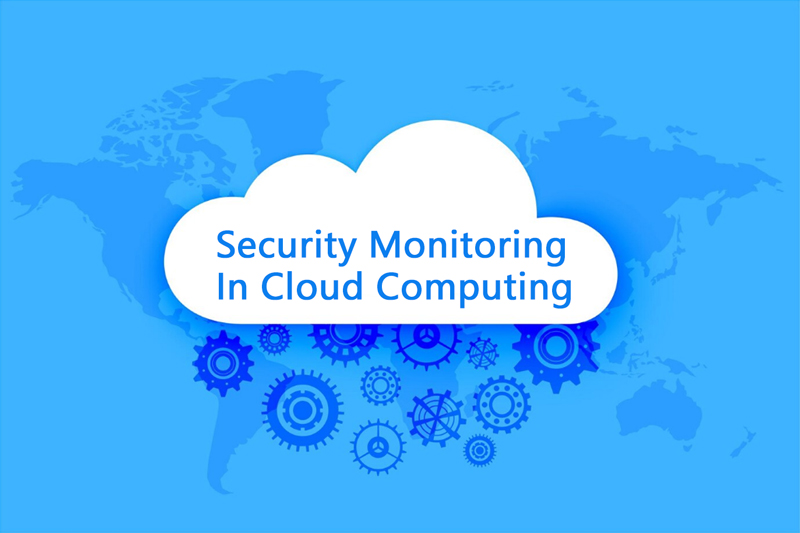What Is Cloud Security Monitoring & Aspects to Focus
The digital age has brought us plenty of different technological advancements. Underneath the surface, there lies the ongoing concern of security. Even worse, such cybersecurity threats can even compromise various systems that contain sensitive data.
Even when it's stored in the cloud, a lack of security can lead to major problems. Especially when you are losing money due to downtime and the loss of trust by your business customers or clients. This guide will go deep into the realm of cloud security monitoring - including its definition, purposes, and benefits (among others).
The Importance of Cloud Security
Because cloud-based platforms used for data storage are popular, security is more important than ever before. The reasons for its popularity include the ability to access the data from anywhere so long as you have the credentials. Having the right cloud-based security monitoring will protect your data while making sure you comply with any applicable requirements such as HIPAA, GDPR, and similar policies.
Cloud security is always available and reliable in an effort to prevent attacks and unauthorized access. It can even be one of the most cost and resource efficient tools you'll use for your cloud-based platforms and applications.

What is Cloud Security Monitoring?
Cloud security monitoring is performed on a continuous basis - involving both virtual and physical services. They are often automated to ensure that they are on the lookout for any threats or vulnerabilities that may exist. When cloud systems are used in an enterprise setting, you will need security that will cover a large amount of space (and the infrastructure that supports it).
Who carries out the monitoring duties?
Let's take a look at the following people who are responsible for the roles of cloud security monitoring:
● Security analysts: These are your "guards at the gate". They will be able to identify, analyze, and mitigate risks that may negatively affect the cloud-based storage system. They perform regular security assessments and audits while monitoring their environment for any potential threats and breaches that may arise. They'll install and manage security tools while following security policies and regulations (when and where applicable).
● Security engineers: They perform roles similar to security analysts. They may perform extra tasks when necessary including duties pertaining to the security architecture such as making modifications and changes if there are instances of scalability.
● CISO: Chief Information Security Officer. They oversee the business regarding the cybersecurity and technology aspect.
● DevOps team: They will keep an eye out on your security requirements along with analyzing the current controls you may have and spotting any gaps that may exist. Furthermore, they will check for misconfigurations, focus on least-access principles, and other responsibilities important to the full on security of your cloud based service.
What Stages are Involved in Cloud Security Monitoring? How it Works
The cloud security monitoring process is broken up into different stages. So it is important to cover every part of it to ensure everything goes smoothly without a hitch. With that in mind, let's take a look at the following:
Stage 1
This will consist of configuring the cloud security monitoring and analytics software. Specifically, you'll want to set up the target objectives, alerts, and the data collection methods. These will all be based on factors like your needs, preferences, and the sensitivity of the data you handle.
Stage 2
You will need to monitor any data that is collected. This includes the logs of authorized users, the traffic that runs through, and who is able to access specific data sets among others. You will be able to create an idea of what is considered a "baseline" in terms of your cloud environment.
Stage 3
The next stage is crucial to security monitoring in cloud computing. Here, you will analyze the data being monitored for any potential threats that may exist. Be thorough in your examination so you can be able to accurately pinpoint and find the best fitting solution to fix the vulnerabilities that you discover.
Stage 4
Finally, report and document any findings. This can include the threats that have been found along with potential solutions that can be utilized. It is important to be aware of the threats that exist and how serious they may be.
Please note that any type of vulnerability regardless of the "level of seriousness" still needs to be addressed accordingly. Just because it's "low" level, it doesn't mean that you should ignore it. Think of it like a faucet that's dripping in the middle of the night - it may seem like no big deal, but it's doing more harm than good like wasting water and jacking up your water bill.

Essential Elements to Monitor for Cloud Security
It is important for making sure that every possible essential element is monitored. What exactly needs to be monitored and why? Let's take a look at the following table:
What is it? | What makes it important? |
|---|---|
| User Activity | Includes monitoring the standard operating procedures and actions of each user. What activities do they particularly perform in the cloud environment? The name of the game here is tracking end user behavior. This includes keystroke logging, log collection and analysis, and other activities. |
| System Events | Focuses many events ranging from errors, warnings, and general information. You should monitor for these including changes to system settings, software updates, functional failures, and other events that may occur. |
| Network Activity | Your network will need to be monitored regularly for any traffic that may pose a security threat. Thus, it is important to make sure monitoring will be key including baseline activity or anything that may seem out of the ordinary. |
| Cloud Asset | The cloud asset itself including the applications in use must be monitored for any security vulnerabilities that may exist. If they are spotted, it should be recommended to install any patches that can repair it. |
| Vulnerabilities | These vulnerabilities include but are not limited to DDos Attacks, account hijacking, data loss, misconfiguration, and data breaches among others. |
High-Risk Aspects to Focus During Security Monitoring in Cloud
There are plenty of places where security risks can occur. For this reason, it is important to make sure that security monitoring is continuous, not a "set it and forget it" type of solution. Here are some areas where these risks may arise:
1 Cloud Services
There are a handful of cloud-based services that may have several different risks and vulnerabilities including unsecure APIs. Most of the time, they may deal with threats of data branches, DDos Attacks, Shadow IT, and the hijacking of accounts - which may be possible if people utilize third-party login options such as "login with Google" or similar methods.
2 Third-party Applications
These applications may operate on the cloud, but they can face threats like data breaches, software vulnerabilities, and supply chain attacks (assuming they are connected to cloud-based services pertaining to manufacturing, eCommerce, etc.).
3 Cloud Resource Configuration
Configuring your cloud resources should be done carefully. You want to double check everything before it's confirmed. Misconfigurations can cause certain incidents that may threaten the security and safety of the data that's stored.
Aside from data exposure, misconfigurations may lead to you unknowingly not complying with any data regulations that are required. If they are caught before a breach, you may be cited as a warning to fix the issue and follow the regulations.
Failure to do so can lead to legal repercussions including fines. One more reason why security monitoring in cloud computing is so important.
4 User Activity and Access Control
If you are transferring data, there can be risks that can exist including insider threats. Data that is on the move can be intercepted via MitM attacks as well. This means that you will need to implement security measures such as VPNs or similar tools to ensure the data is moved safely and securely.
Tools for Cloud Security Monitoring
Want to know which tools will be useful for cloud security monitoring? Let's take a look at the following table down below:
Category | Monitoring Aspect | Best Tools |
|---|---|---|
| Security Information and Event Management (SIEM) | This will detect, analyze, and respond to any security threats that may endanger the operations of your organization. | ● SolarWinds Security Event Manager ● LogRhythm NextGen SIEM ● McAfee Enterprise Security Manager ● Datadog |
| Intrusion Detection/Prevention Systems (IDS/IPS) | Monitors your network while identifying any potential incidents and logging information. If they appear to be unauthorized, they will stop the incident from occurring while submitting reports to those who have access to the data systems. | ● Fidelis Network ● McAfee Network Security Platform ● Cisco Secure Firewall ● Security Onion ● Hillstone S-Series |
| Cloud Access Security Brokers (CASB) | This will be used to enforce the security policies that you set up in your cloud environment. This will be in place between the users and the providers to help make sure the security policies are followed accordingly. | ● Broadcom ● Microsoft Defender ● Lookout |
| Vulnerability Management | Simply put, such tools will continuously be on the lookout for any vulnerabilities that may exist in the cloud environment. | ● Aqua Security Trivy ● Greenbone OpenVAS ● CrowdStrike Falcon Complete XDR ● Microsoft Defender Vulnerability Management |
| Network Traffic Analysis | Monitors the amount of data that is moving across a network in real time. | ● Cisco Network Analysis Module Traffic Analyzer ● ExtraHop Network Traffic Analysis |
| Log Management | Responsible for collecting, storing, and analyzing data pertaining to user logins. | ● Sumo Logic ● Mezmo ● Datadog ● Amazon CloudWatch Logs |
| Identity and Access Management (IAM) | Helps verify the identities of users and devices logging into your cloud environment. | ● Auth0 ● SpectralOps ● AWS Identity & Access Management ● Microsoft Azure Active Directory ● IBM IAM |
| Endpoint Detection and Response (EDR) | An endpoint tool that will monitor end user devices while detecting and responding to various cyberthreats that may exist. | ● Bitdefender Endpoint Detection and Response ● Cisco Advanced Malware Protection for Endpoints ● Cortex XDR |
| Encryption and Key Management | Implements policies and procedures crucial for storing, organizing, protecting, and distribution encryption keys. | ● Google Cloud Key Management ● Azure Key Vault ● AWS Key Management Service |
Still need help? Submit a request >>


